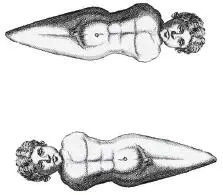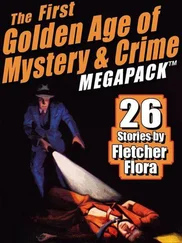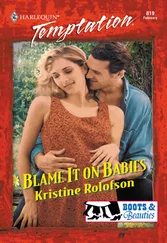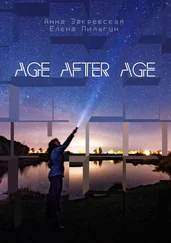Sometimes, an alarm blares inside one of the buildings in the chemical plant. And just like before, the sound brings out the plant operators in green hazmat suits. They disappear quickly, rounding the fake hedges lining the north side of the gray windowless building.

Their unblinking eyes urged me on. They had so much faith in me that I found it difficult to disappoint them. It was impossible not to lie. There was nothing quite like it in the history of the planet,” I said. “The waves battered the shores during rough weather. Once the storm was over, the carapaces of giant crabs and sea turtles littered the beach. The tops of corals were washed off, glistening red in the sand. The clam shells were cracked, long emptied of their owners. Their colors — all the beautiful colors you can ever imagine. The smell of saltwater and millions of years of constant rain and lightning hits you. Then you notice it as the sun shines at last. A rainbow. All the visible colors you can conjure arching from east to west.”
Damien was close to tears when I tried to mimic the sound of the dolphins.
“Oh, how they sang!” I said.
“What about the beach sand, Uncle?” Arabella asked. “You promised me that nobody can count the grains of sand on the beach.”
“We could not count them, but we siphoned and used them up. The sands had to be melted into glass to construct this dome.” I pointed upwards, to the invisible edge of the city’s glass enclosure. “It was the only way to survive.”
They frowned. I knew they did not want to hear that part of the story. They were young, and their battery panels had just been replaced to last for another three hundred years. They did not yet understand that hiding inside a glass cage still counted as a courageous act.
I produced from my pocket a small gray pebble from the fabled beach. It was made of plastic, but none of them noticed. Enraptured, they passed it around, rolled it in their hands as if it was the most sacred thing in the world. They took turns holding it, closing their eyes as if to imagine the smell of saltwater, a smell that was alien to them. In their minds, they heard the murmur of waves. In their minds, they conjured their own versions of the singing dolphins.

Aman dangles from a rock jutting from the bare face of a sheer cliff. He scrambles for a foothold, finds none. There is nothing that he can use to hoist himself to safety. The top of the cliff is twenty feet away. The drop is a dizzying four hundred feet or more.
He could have gotten in that precarious position by accident or by sheer stupidity. But it does not matter at this point. He is going to die.
He has no harness, no ropes, nothing. He does not call out for help, either. He must have gone rock-climbing alone, relying on his years of experience and instinct to survive.
Four hundred feet below him are wind-beaten rocks, desert sand, exposed sections of stratified earth, fossils of long-extinct vertebrates, and remnants of civilization. And bearing down on this man and whatever lies below him is gravity, the stuff that’s supposed to keep his feet firmly planted on the ground while allowing him just enough space to stand upright and balanced on two legs.
Four hundred feet below him is the dull yellowing of arid land. Dunes and weathered canyons will open up to receive him once he lets go of the rock that he’s clutching with numbing hands.
Three hundred feet away on another outcropping of sandstone, there’s another man riveted by the plight of the man hanging on the cliff. It is safe to call the man with the binoculars Justin, because that’s what the tiny embroidery on his windbreaker spells out. Justin’s ring finger has a white section of untanned skin around which a wedding ring is supposed to reside.
Through the wide-angled eyepiece of his pricey Swarovski Optik SLC 8×42 HD, Justin observes the man clinging to a forlorn rock by the side of the cliff.
Holding his breath, Justin frantically tries his radio to call for help. Static hisses on every channel. Seconds pass. Justin debates whether to continue watching the man or go to find help. He decides on the latter and quickly prepares to climb down from his windy perch on the rock.
Justin’s foot gets caught in a small crevice, the inconspicuous boundary between two sedimentary rocks that is continuously widened by weathering. He loses his footing and tumbles. In that split-second before his head hits the rock, he attempts to cushion his fall with his right hand. The gesture does not break the fall. His head hits the rocky mound. Unlike in the movies, there is no dramatic thud, just the barely imperceptible sound of finality. Justin does not die immediately, but the blow to his head is fatal. He loses consciousness.
Minutes pass.
The man still holds fast to the rock that keeps him from plummeting down the cliff. He gets to decide when to eventually let go. He is still unwilling to let go. He still has enough strength to remain hopeful, if he is the type of person who believes that hope can change what is otherwise a calculated turn of events.
The man on the cliff holds on — for how long he can grip the rock does not matter at this point. He is going to die.
Justin’s body attracts the vultures. One swoops down. Then another follows. The grisly carrion birds touch down beside the body, fold their wings as if in supplication, the unique pose of the defeated. The vultures bend their necks, bow their heads, begin to peck away at the dead, take what they can before moving on. The long, long age of blight rambles forth.
Grateful acknowledgement is made to the editors of the following publications in which the early versions of these stories first appeared:
“The Wire Mother,” CONFRONTATION MAGAZINE 116, Fall 2014.
“Leviathan,” FAST FOOD FICTION DELIVERY (Anvil Publishing, Inc., 2015).
“The Ghost of Laika Encounters a Satellite” was a reworked segment of the story “The Dogs,” which first appeared in CHARLOTTE VIEWPOINT, September 2013.
“No Little Bobos” (“Chelsea and the Bobo Doll”), VOL. 1 BROOKLYN, April 2014.
“The Playground” (“The Children”), BOSLEY GRAVEL’S CAVALCADE OF TERROR, October 2010.
“Those Almost Perfect Hands,” EXPANDED HORIZONS 21, August 2010.
“Jude and the Moonman” (“Moonman”) first appeared in PELLUCID LUNACY: AN ANTHOLOGY OF PSYCHOLOGICAL HORROR (Written Backwards, 2010) and was reprinted in PHANTASMACORE, April 2012.
“Pet” first appeared in PHILIPPINE SPECULATIVE FICTION 7 (Kestrel Publishing/Flipside Publishing, 2012) and was reprinted in UNCONVENTIONAL FANTASY: A CELEBRATION OF FORTY YEARS OF THE WORLD FANTASY CONVENTION (2014).
“Zombie Sister” (“Zombie”) first appeared in SOUTHERN PACIFIC REVIEW, November 2012 and was reprinted in UNO KUDO volume 3, October 2013.
“Beautiful Curse,” SMOKING MIRRORS (Connotation Press, 2013).
“Day of the Builders,” BEECHER’S MAGAZINE 5, Spring 2015.
“The First Ocean,” THURSDAY NEVER LOOKING BACK: AN ANTHOLOGY FOR THE END OF THE WORLD (the Youth & Beauty Brigade, 2012).
Part I. “Animals”: Goliath the Elephant Seal, at the Vincennes Zoo, Paris (1936) by Acme Newspictures, courtesy Gift of The Age (Melbourne, Vic.) and the State Library of Victoria.
Читать дальше














